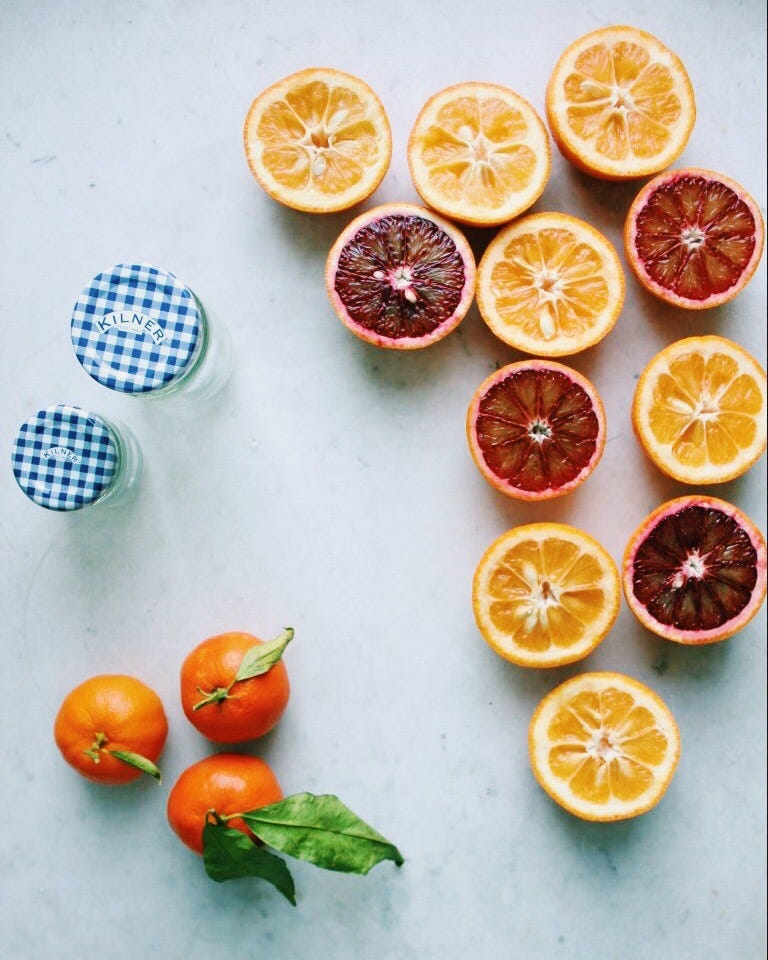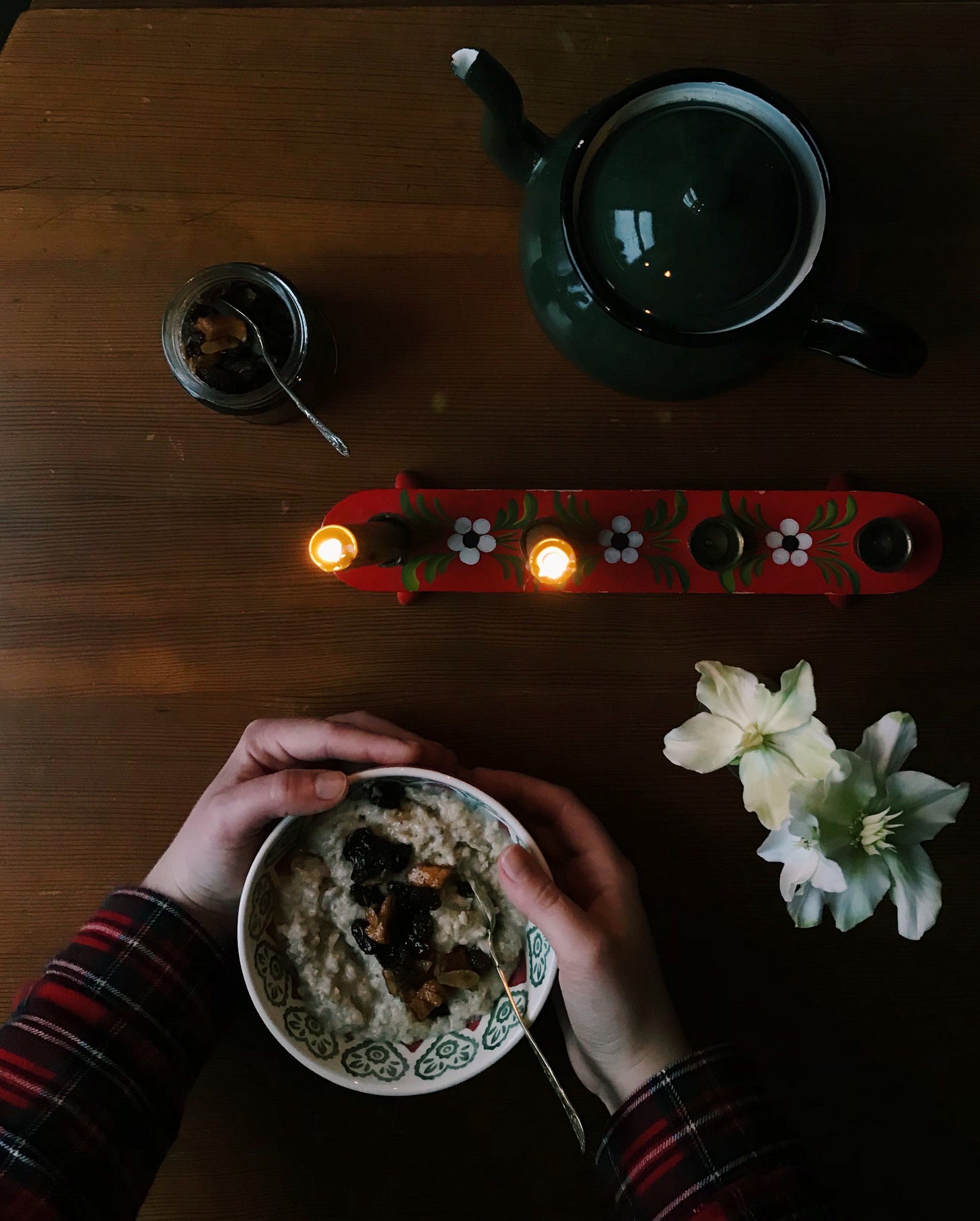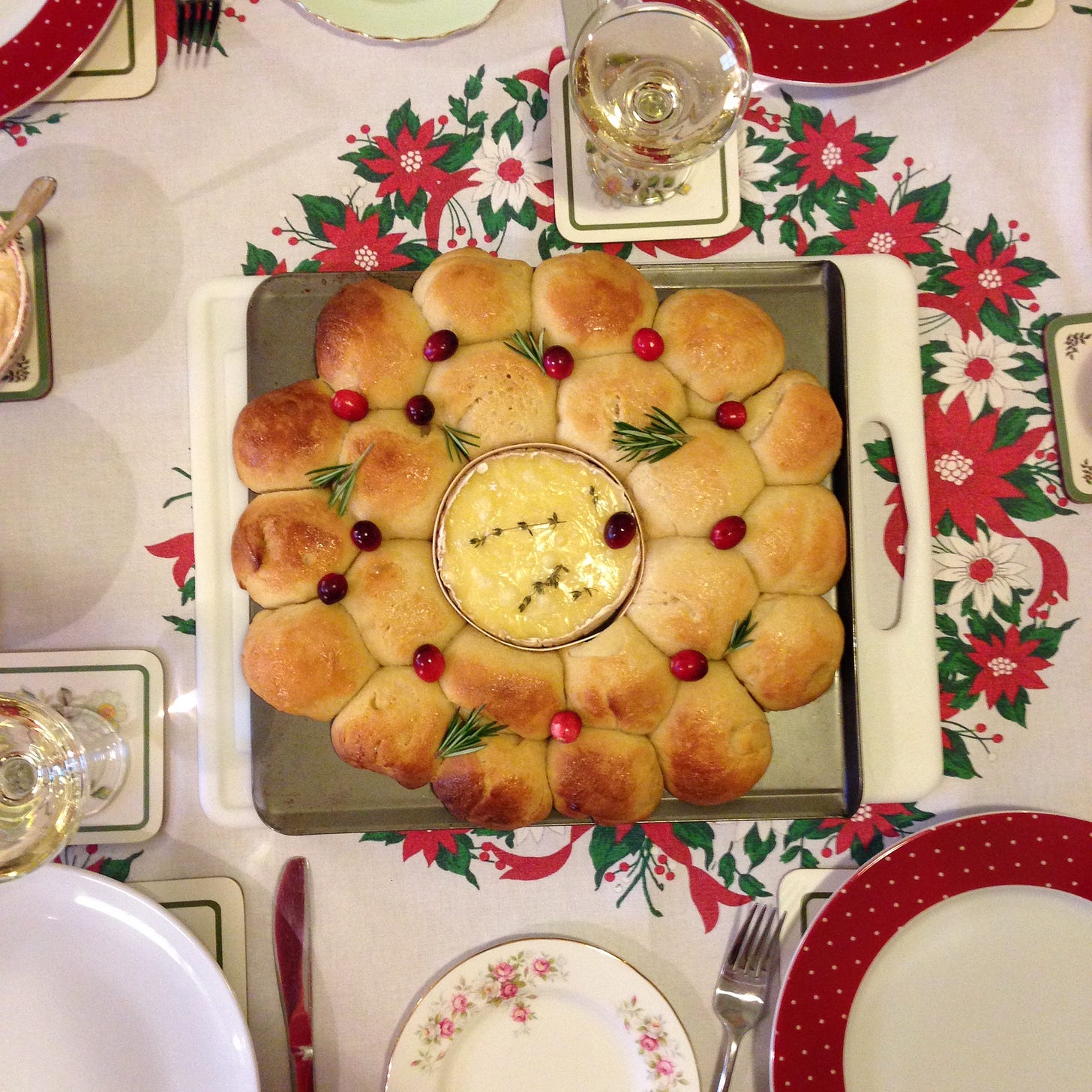In Season: Making the Most of Early Winter Produce
Earlier this month I posted my list of in-season ingredients for Yule. I thought it would be fun to accompany this with some ideas for what to make with seasonal produce over the next few weeks. Although we associate Winter with frugality, there is so much in season at this time worth celebrating. I’ve been a vegetarian for 25 years and I love to find new ways to get creative with veg at this time of year in particular. Festive veggie food can be heavy but a new generation of cooks such as Anna Jones (who kindly featured me in her newsletter last year - total fangirl moment!) combine clever layering of flavours with much-needed texture and creative twists.
Here are some things I’ve been making this month:
Winter is certainly porridge season and you can get creative with all manner of seasonal festive toppings. Some favourites in our house: mincemeat porridge (add a spoonful of homemade mincemeat, stir through and top with toasted almonds), cranberry and pistachio (stir dried cranberries and orange zest in at the cooking stage, top with a spoon of cranberry sauce and toasted pistachios), clementine and ginger (sweeten with chopped stem ginger and their syrup, top with clementine slices and crystallised ginger), and gingerbread porridge (add a pinch of ground ginger, sweeten with treacle and decorate with crumbled gingerbread biscuits).
Seasonal vegetables might be synonymous with over-cooked sprouts and boiled-to-death potatoes, but treated the right way veg can take centre stage and be full of flavour and texture. Brussels sprouts can be shredded and fried with olive oil, cumin seeds and a little coriander until charred – which releases their sweeter notes. I make quick crispy kale by frying it, loosely covered, in a heavy bottomed saucepan with a drizzle of olive oil, chilli flakes and sea salt.
Roasting root vegetables absolutely brings out the best in them. Carrots are delicious with honey and caraway seeds, while parsnip goes well with a little lemon zest and flaked almonds. When I have a glut of root veg, roasting the lot together with olive oil and sea salt then blending the mixture with stock to a loose consistency makes a hearty and satisfying soup.
For an indulgent vegetarian starter, for the last few years I have made a brioche wreath with a baked camembert centre. Baking your cheese is simple: get the kind in a wee wooden box, remove the wrapping and replace the cheese in the middle. Cut a cross in the middle of the top of the cheese and poke in a couple of rosemary sprigs, then roast in the oven until the cheese is golden and bubbling. Serve with brioche or focaccia. In previous years I’ve also served this with Nigel Slater’s cranberry focaccia from The Christmas Chronicles.
Speaking of cranberries, cranberry sauce is a seasonal staple in our house. Served with everything from veggie roast dinner to cheese on toast, I can’t get enough of the balance of sharp and sweet. That’s why I don’t have a set recipe: I cook the cranberries with the juice and zest of a couple of clementines until all the berries have popped and the fruit is cooked, then I add sugar to taste - I prefer mine not too sweet. This year I’ve also tried crystallising cranberries to top my festive cranberry and white chocolate bundt - I love the eye-popping sharpness against the crisp, sweet shell. Recipe in the blogpost.
For a veggie main, Anna Jones is my go-to. Her celeriac celebration pie is always a hit: the mixture of gooey middle and crispy topping is delicious, and the way she elevates the celeriac with the herbs and seasoning here is just magical. Otherwise, her chard, lentil and bay gratin is something I make almost weekly at this time of year - it’s the bay and nutmeg spicing that make this, as well as some sort of oven-based wizardry that transforms the humble lentil into something really special.
We associate Summer with preserving, but I love it all the more so at this time of year. I’ll be making quince and cardamom mincemeat and storing up citrus season too. Preserved lemons are a staple of my larder cupboard and perfectly complement tagines and stews – but have you tried preserved clementines? The result of some kitchen experimentation inspired by Rosie Birkett: quarter two clementines – including the skin – and place them into a sterilised jar along with a bay leaf. Make a pickling solution from equal amounts of white wine vinegar and water with about half the amount of sugar and a generous pinch of salt and heat in a saucepan until the sugar has dissolved. Pour over the fruit and top up with a little more vinegar and boiling water if necessary. Seal the jar and store in the cupboard for at least a week before using. They will keep for a good few months unopened, once opened keep in the fridge and eat in a month or so.







